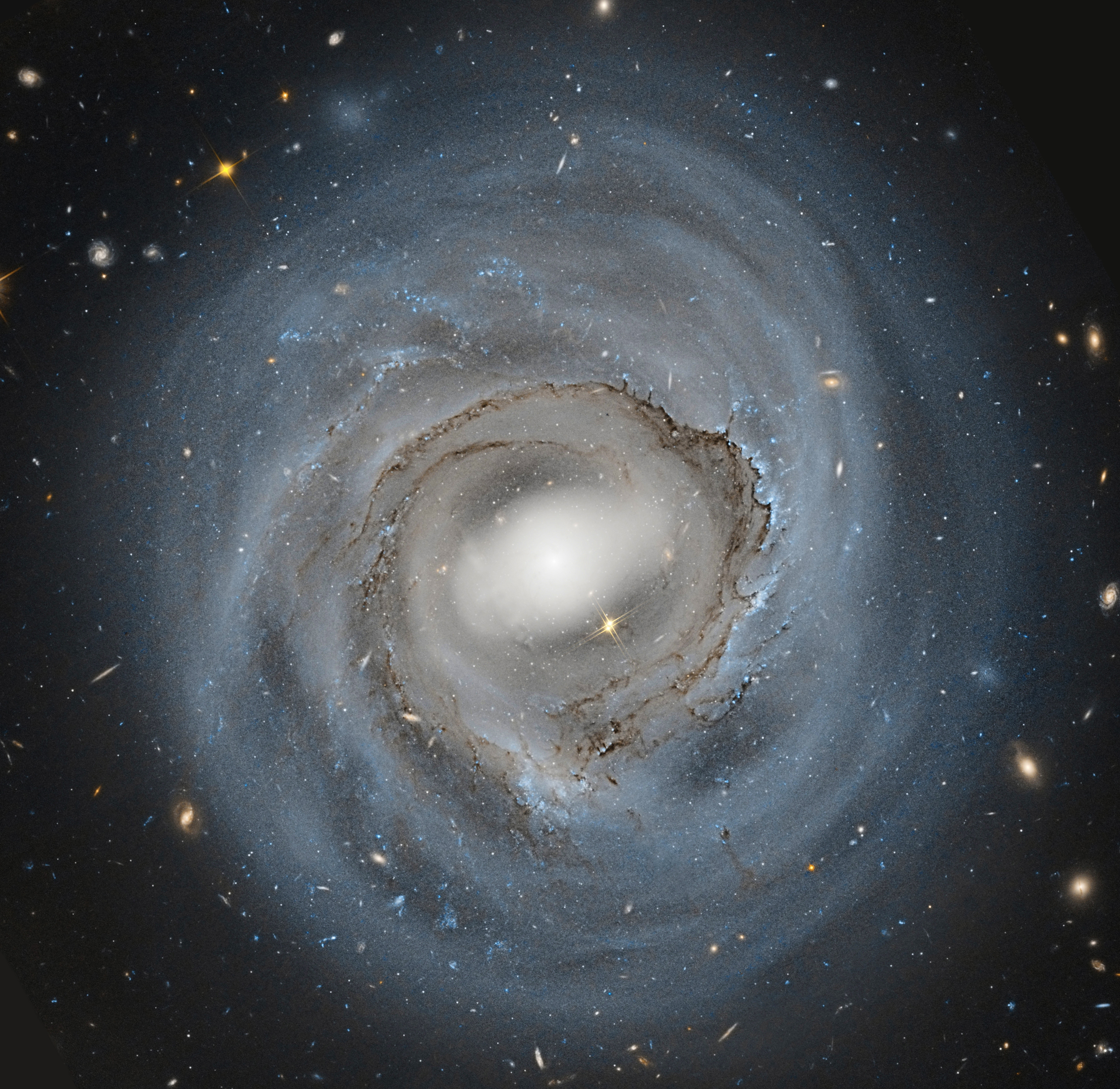Gas Filaments from the Collision between the Giant Virgo Elliptical M86 and the Spiral Galaxy NGC 4438.
The giant elliptical galaxy M86 is the dominant galaxy in a subcluster now merging with the rest of the Virgo cluster. Filaments of ionized gas (H-alpha emission) connect M86 and the nearby disturbed spiral galaxy NGC 4438, revealing that they experienced a high-velocity (~1000 km/s) collision about 100 million years ago. (Kenney et al. 2008). Their collision is not obvious in broadband images, which show starlight, but only when viewed in H-alpha. The collision involved both a gravitational disturbance, changing stellar orbits, and an violent ISM-ISM collision, producing strong shocks and heating. NGC 4438 would have experienced ram pressure stripping and lost much of its gas as it passed through the hot gas halo of M86 (red contour lines in middle panel show X-Ray emission from hot gas). Unusual clouds of HI in M86 (blue contour lines in middle panel) may have originated from gas stolen from NGC 4438 during the collision.
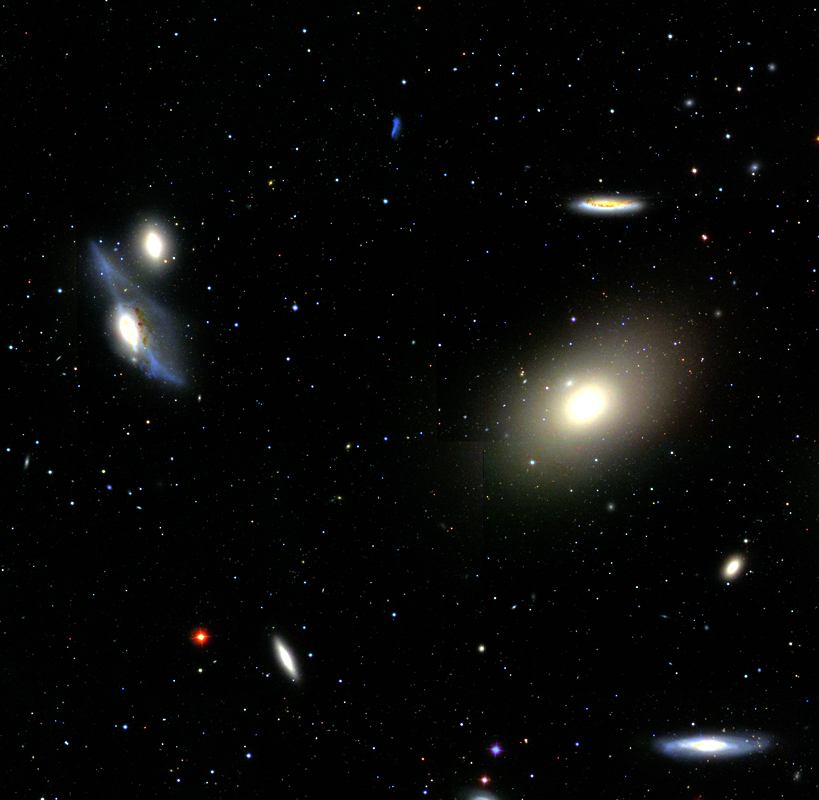
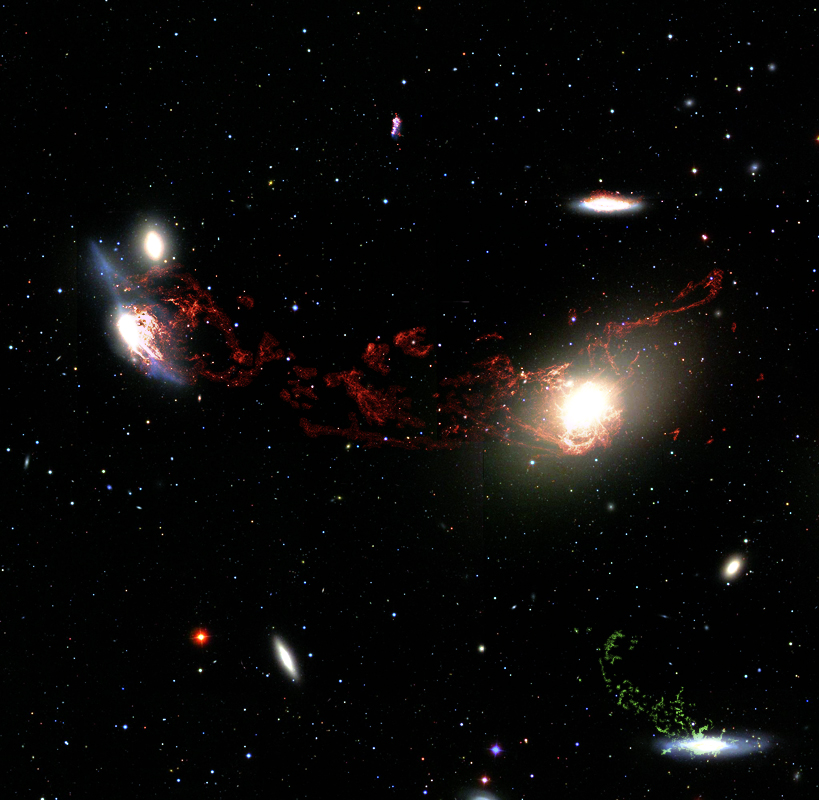
Click on the image to reveal H-alpha filaments.
In the H-alpha image, the red color is lower velocity H-alpha emission (-600 to +400 km/s), which covers the velocity range of M86 and NGC 4438. The green color is higher velocity H-alpha emission (2000 to 3000 km/s), which covers the velocity range of another nearby spiral NGC 4388, which is experiencing ram pressure stripping from its motion through the Virgo Cluster.
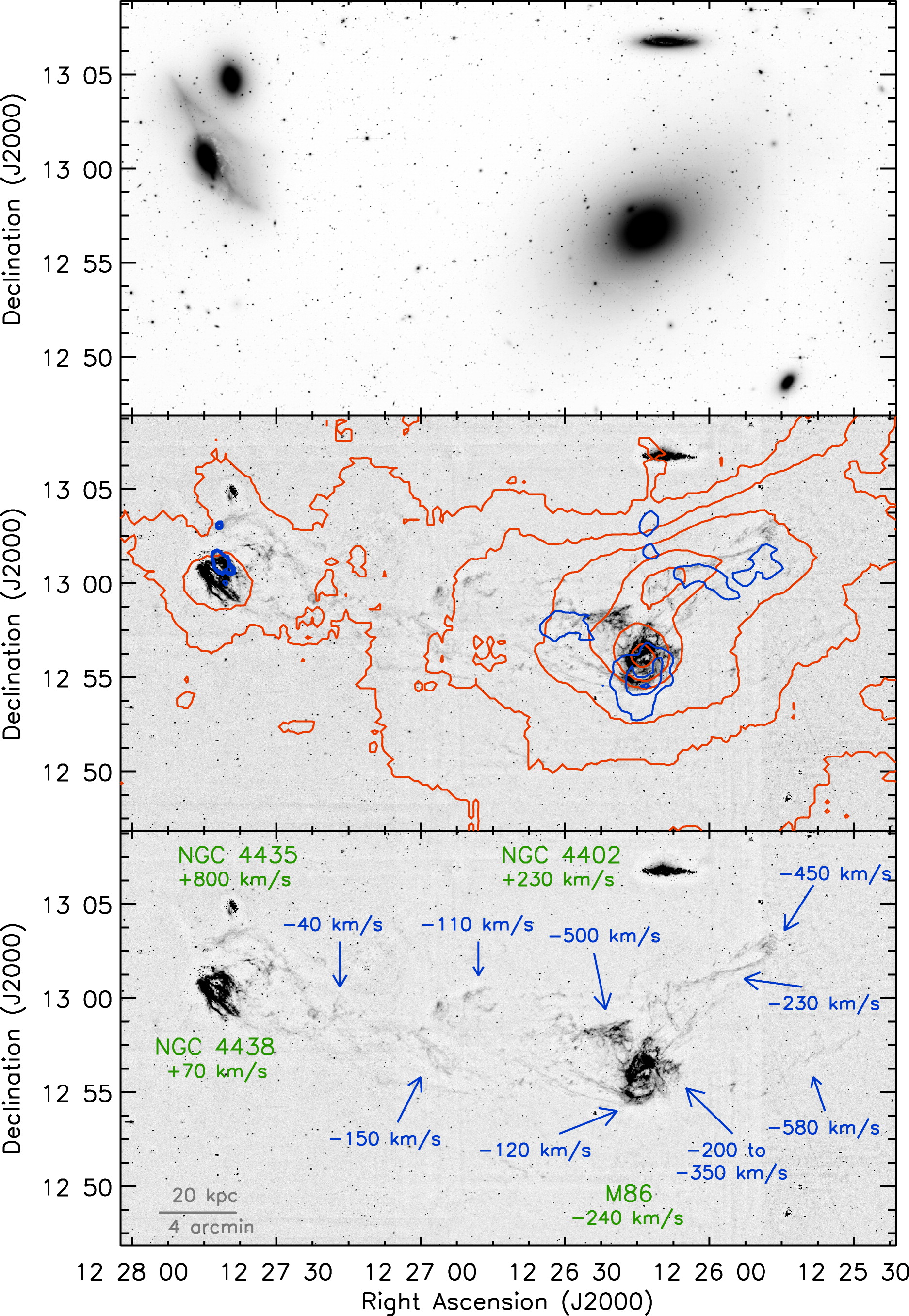
Click to enlarge image.
Pillars of Dust and Young Stars from Ram Pressure Stripping of the Giant Spiral NGC 4921 in the Coma Cluster
The largest spiral galaxy in the Coma Cluster is NGC 4921. Its truncated HI gas distribution (green contours) and HI tail pointing to the SE reveal that it is presently experiencing ram pressure stripping from the NW (Kenney et al. 2015). At the leading edge in the NW, the deep HST image shows a remarkable dust front, where dust and gas has been pushed and piled up. Linear filamentary features extend outwards from this dust front, some of which have young star clusters at their heads. These form from dense concentrations of gas and dust, which are too dense to be accelerated by ram pressure, so partly decouple from the low density ISM as it is pushed by ram pressure. Yet the connections between linear filaments and the downstream dust front, and the many C-shaped features along the dust front suggest that the high and low density parts of the ISM are bound together by magnetic fields, as illustrated in the cartoon.
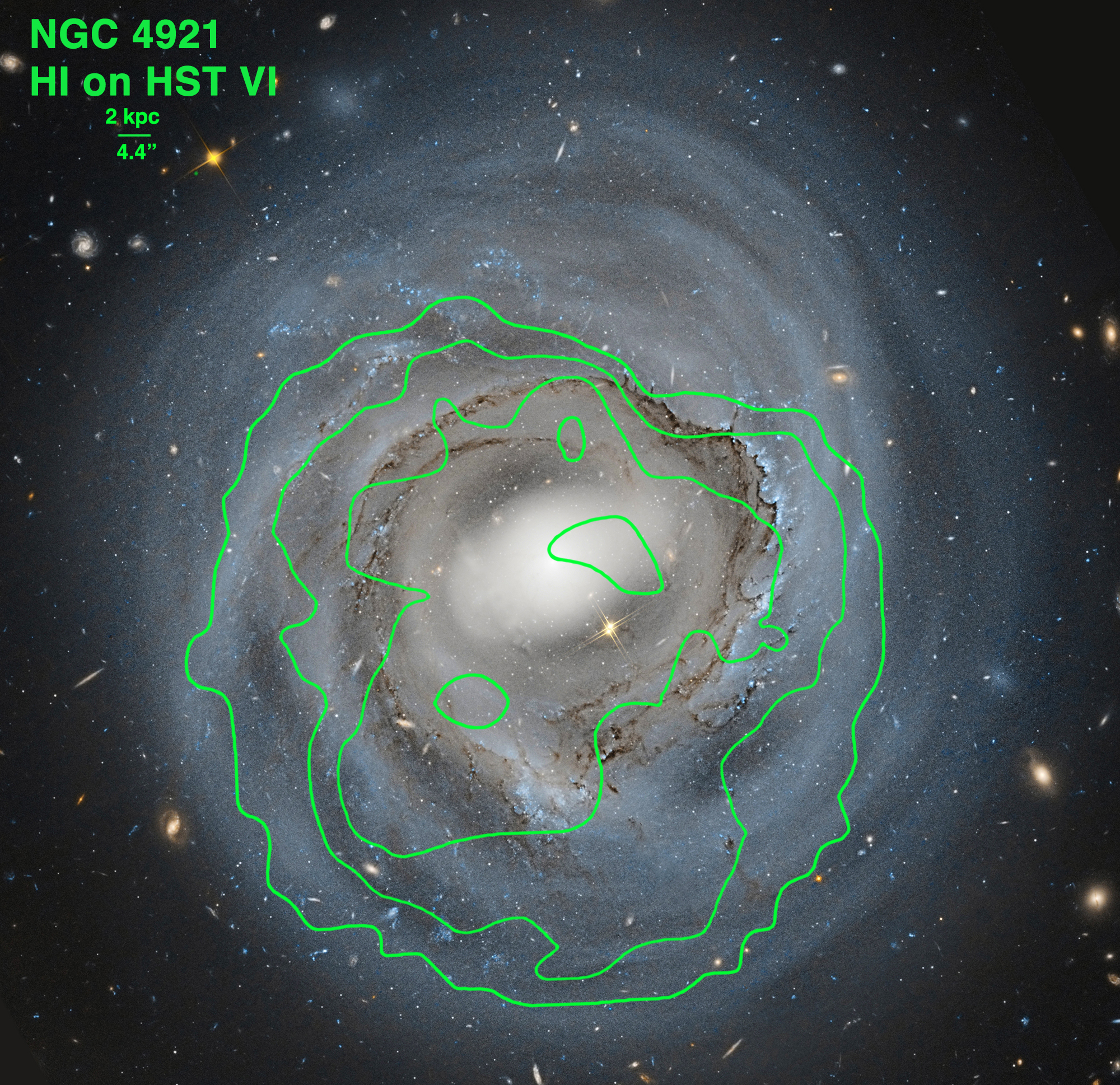
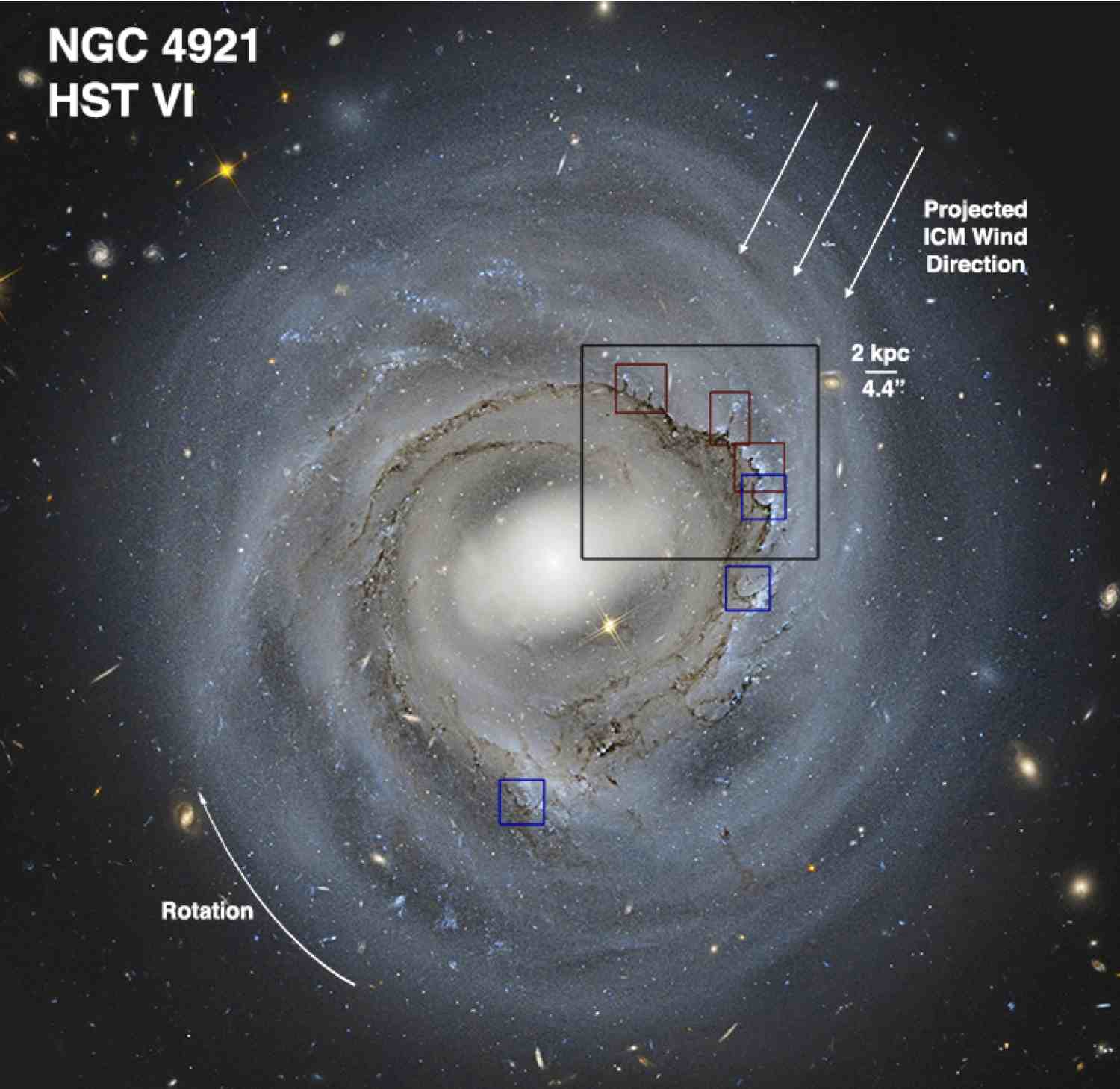
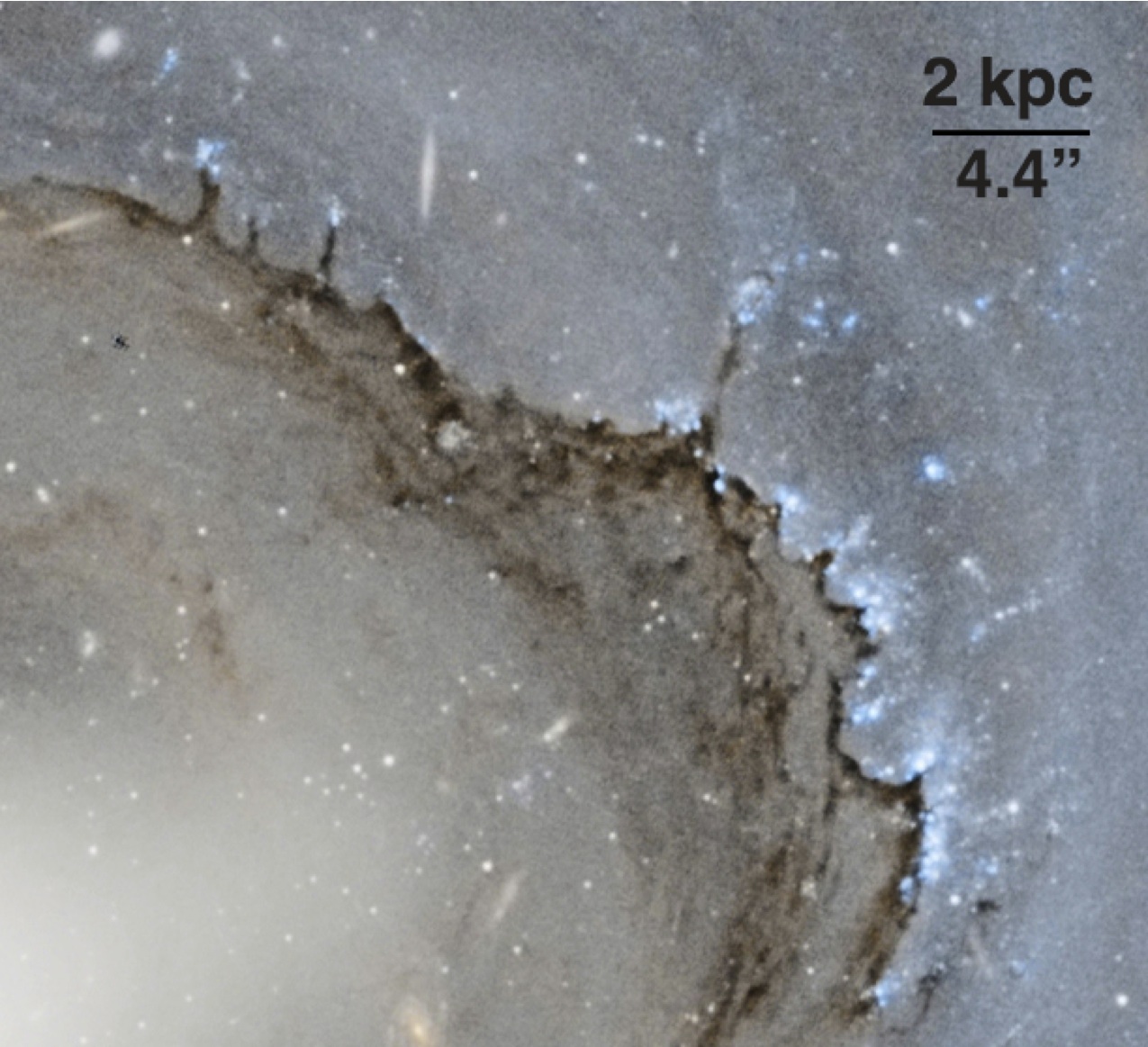
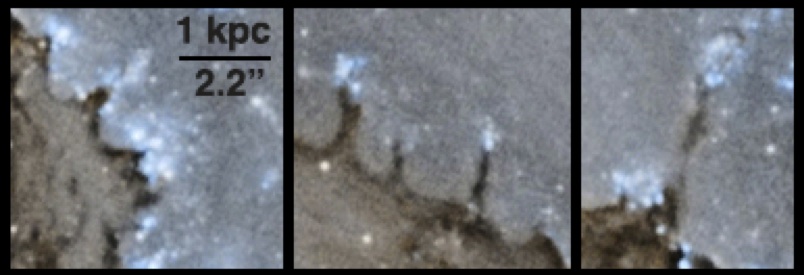
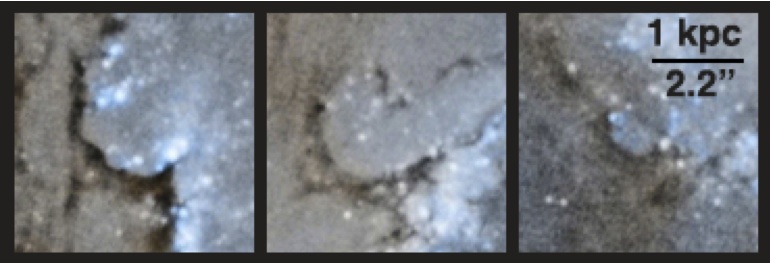
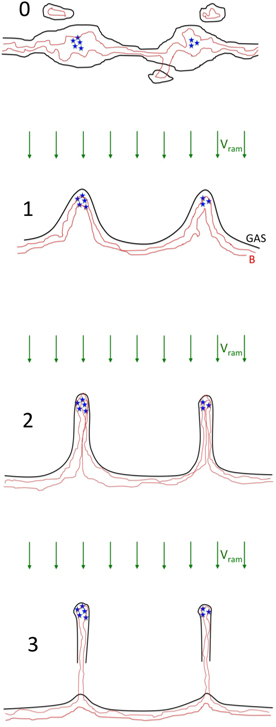
Click to enlarge image.
The Baby Jellyfish Galaxy NGC 4522
NGC 4522 was one the first spiral galaxies with convincing evidence for ongoing ram pressure stripping, as it shows the HI gas removed from the outside-in, a one-sided tail of HI gas, and an undisturbed stellar disk (Kenney et al. 2004). It was the first galaxy shown to have star formation in the ram pressure stripped tail (Kenney & Koopmann 1999), a phenomenon now known as a “jellyfish galaxy”. High resolution HST images (Abramson et al. 2014, 2016) show small dust clouds that are dense enough to resist the initial stripping, so become decoupled from the rest of the stripped ISM, but then become ablated to form linear filamentary clouds.
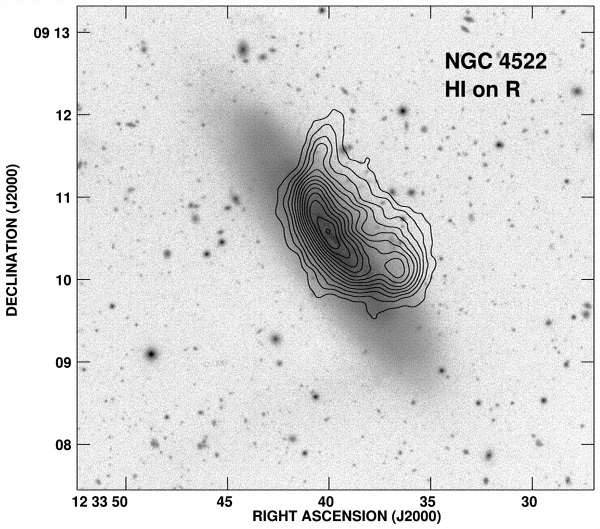
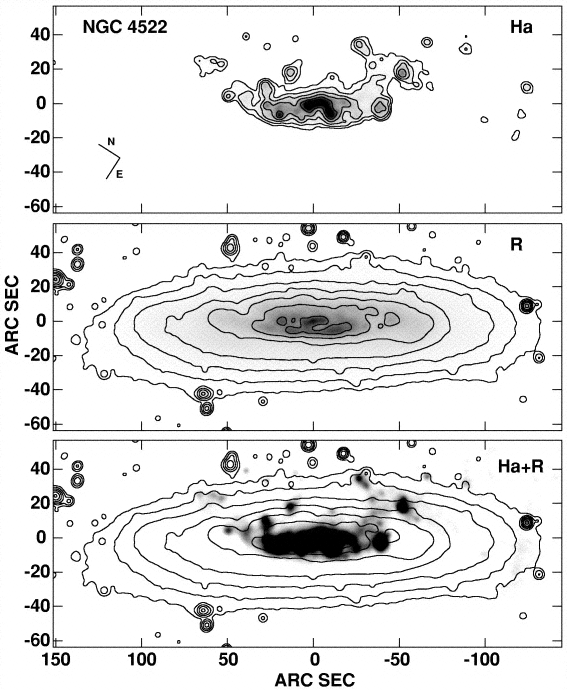
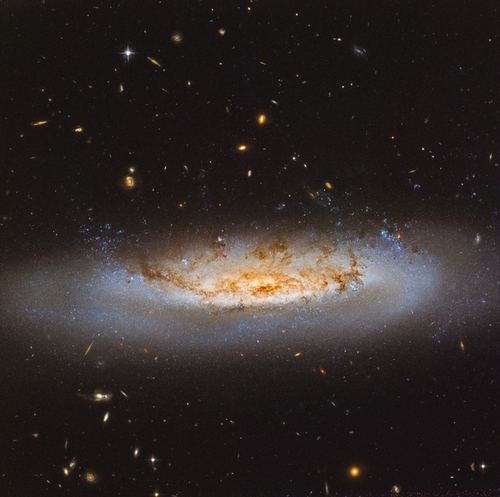
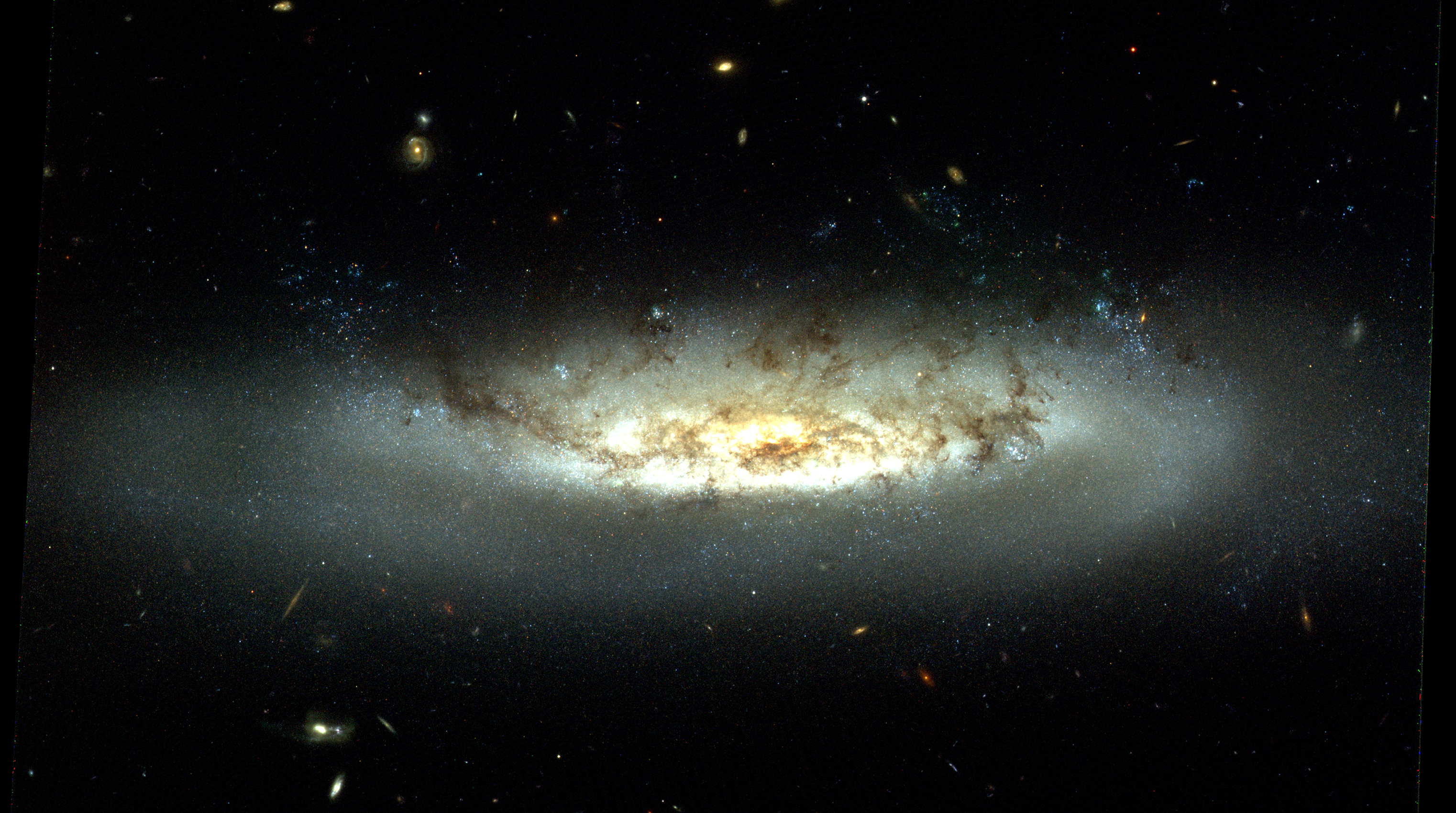
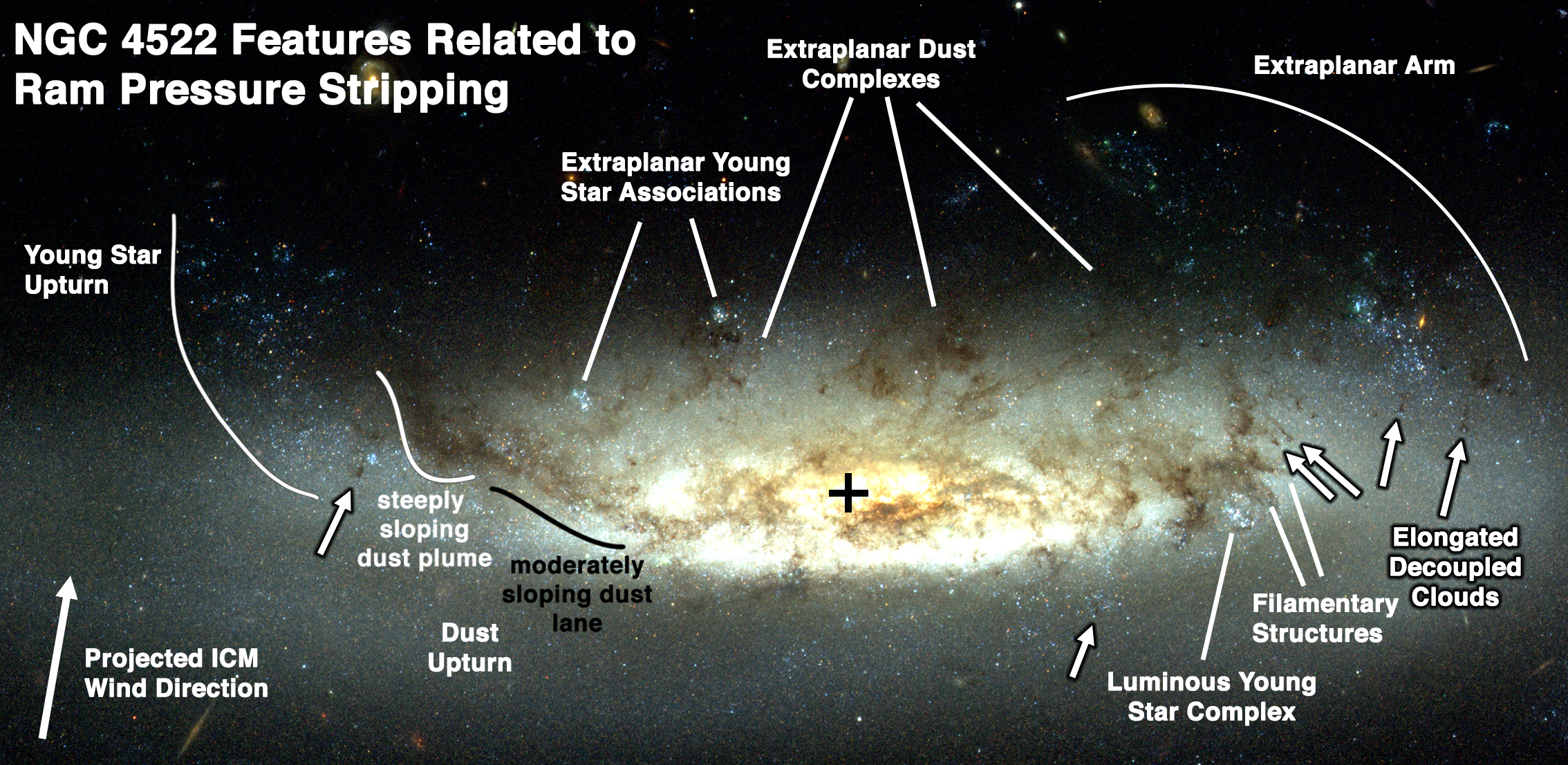
Click to enlarge image.
Large Filaments of Decoupled Dense Gas in NGC 4402
The spiral galaxy NGC 4402 is a great example of active ram pressure stripping in the Virgo Cluster. Whereas NGC 4522 is moving away from us in the cluster, NGC 4402 is moving toward us, so that the leading side of the ram pressure interaction is the near side. Thus we can see the strong impacts on the leading side more clearly. HST images (Abramson et al. 2014, 2016) show that the outer disk has virtually no dust, since it has been stripped by ram pressure. Iirregular filaments of dust blown out of the galaxy can be seen extending to the northwest (upper right). Near the outer edge of the stripped dust disk, there are 2 large linear filaments that protrude outwards beyond the main stripping radius. These originate from dense clouds which resist the initial stripping, so become decoupled from the rest of the stripped ISM, but then become ablated to form linear filamentary clouds. One of these has a complex of young stars at its head.
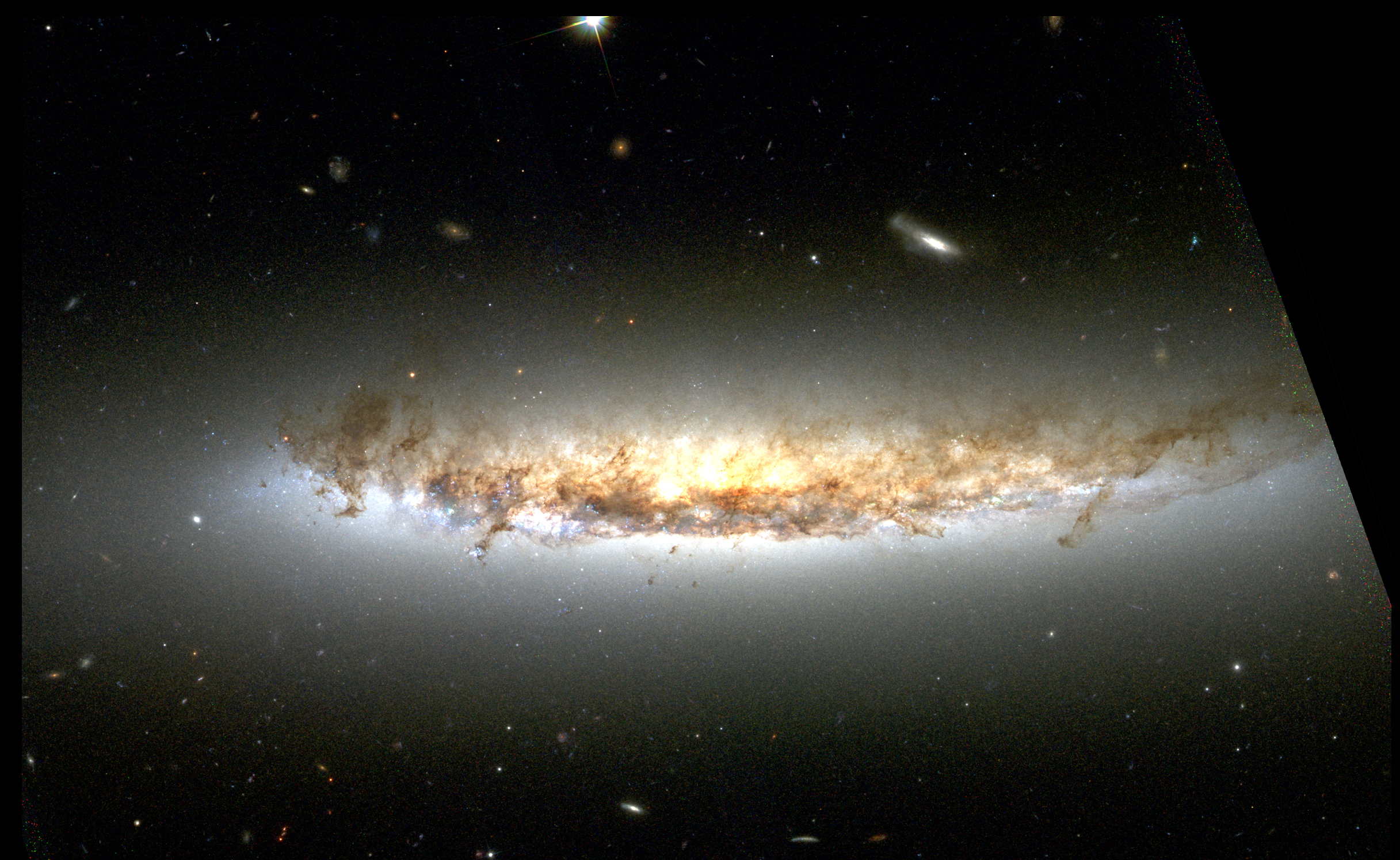
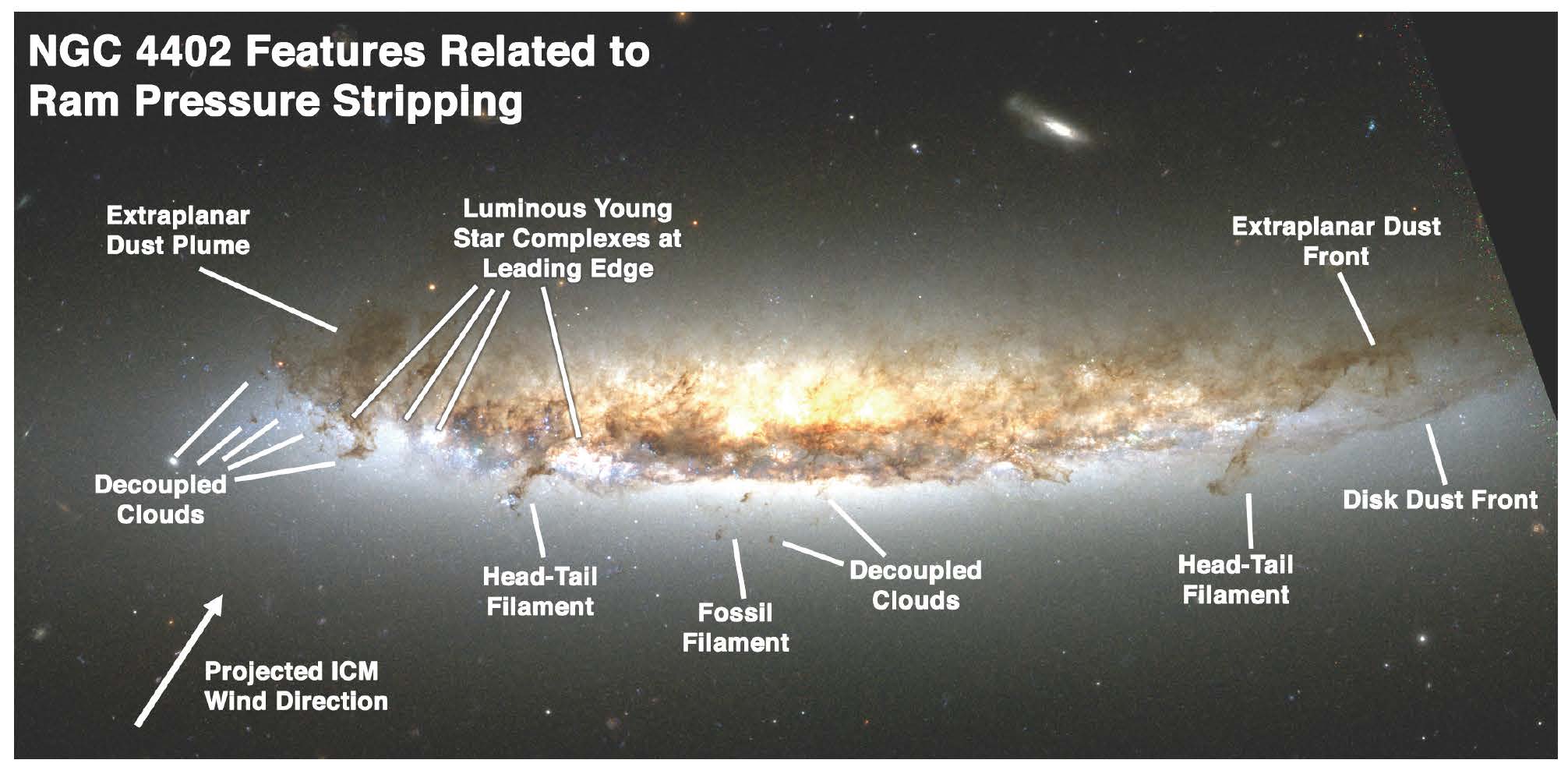
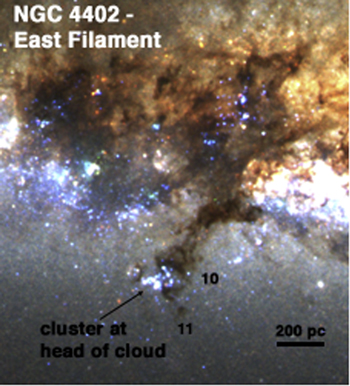

Clik to enlarge image.
Transformation of a Dwarf Galaxy by Ram Pressure Stripping and the Fireball Tail of IC3418
IC3418 is a dwarf galaxy in the Virgo Cluster that is in the process of transforming from a late type dwarf to an early type dwarf (“dwarf elliptical”) due to ram pressure stripping. It stopped forming stars 200 Myr ago and has no gas, but does have a spectacular tail of young stars that is prominent in the UV (GALEX image), formed by ram pressure stripping. Many of the young stars in the tail form linear parallel streams with HII regions of ionized gas at the heads. These features have been called “fireballs”, and probably form as ram pressure continues to accelerate the gas, but doesn’t affect the stars which therefor get left behind, as depicted in the cartoon (Kenney et al. 2014).
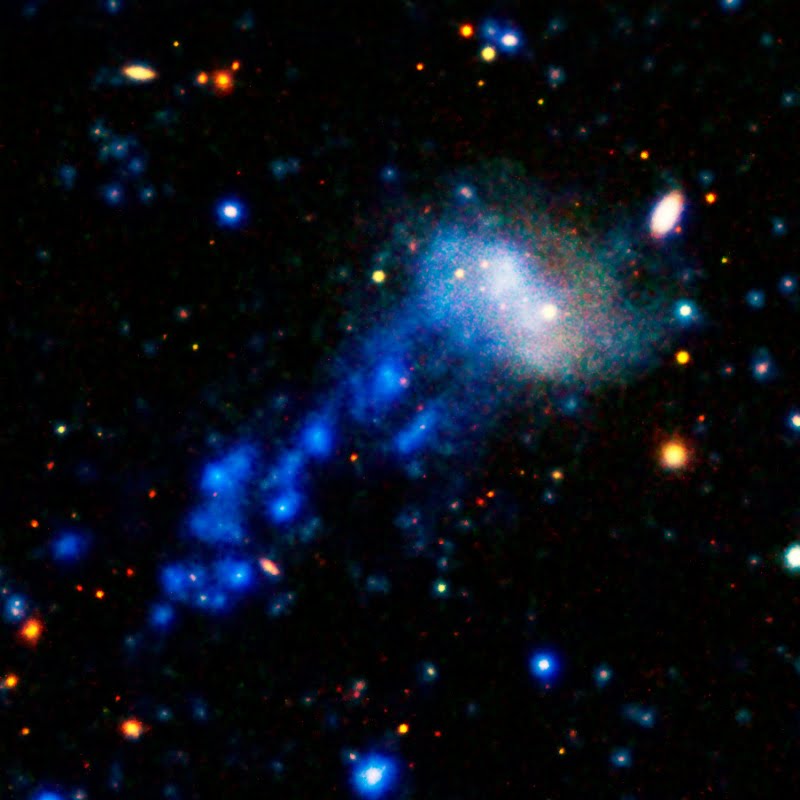

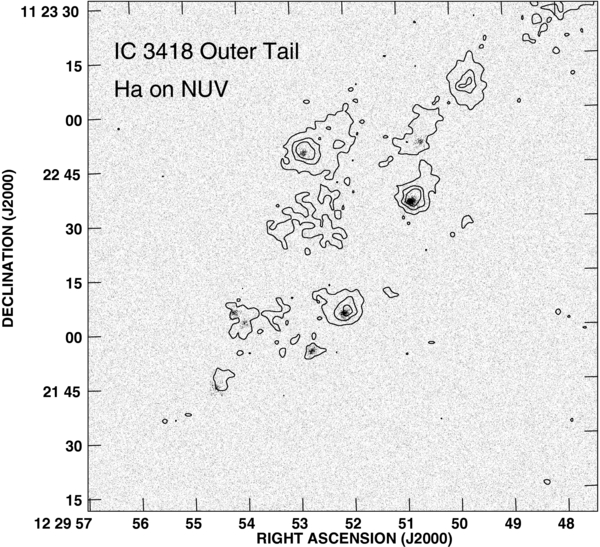
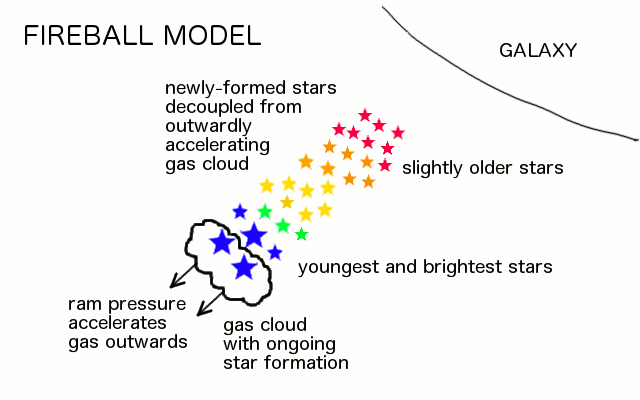
Click to enlarge image.
A Remarkably Long and Thin Ram Pressure Stripped Tail
D100 is a spiral galaxy in the Coma Cluster experiencing strong ram pressure stripping, as revealed by the very long (40 kpc) and thin (2 kpc) H-alpha tail. (Cramer et al. 2018). The HST image shows a clear spiral disk, and dark bands from dust extinction show that the inner part of the stripped dust and gas tail shows straight, well-defined edges and no signs of turbulence. There is some star formation in the tail, but most of the H-alpha emission arises from some other mechanism. The tail is simpler than other tails, indicating that stripping has been simply outside-in, without multiple radii being stripped at once. The tail does not broaden much over its length, implying that turbulence and other factors that might act to broaden it are minimized. The 2 galaxies near D100 are an interesting part of the story. the reddish-yellow galaxy to the left of D99 has no gas or ongoing star formation, and stopped star formation ~500 Myr ago. Its star formation was likely quenched by ram pressure stripping. D99 has faint spiral structure, suggesting that it is a galaxy similar to D99, but observed at a later evolutionary stage. The blue-ish dwarf galaxy below D100 also has no star formation, and also likely suffered stripping.
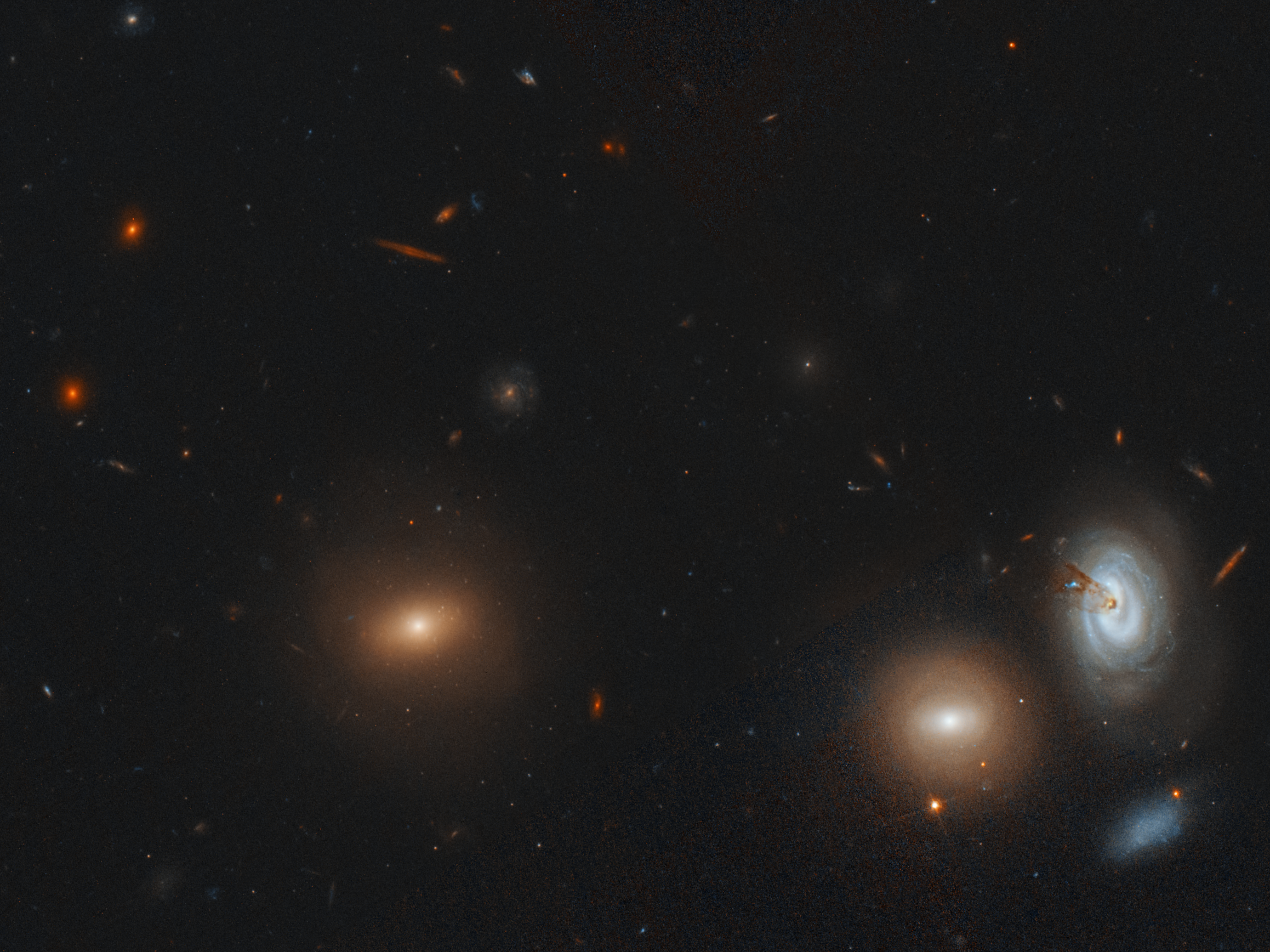
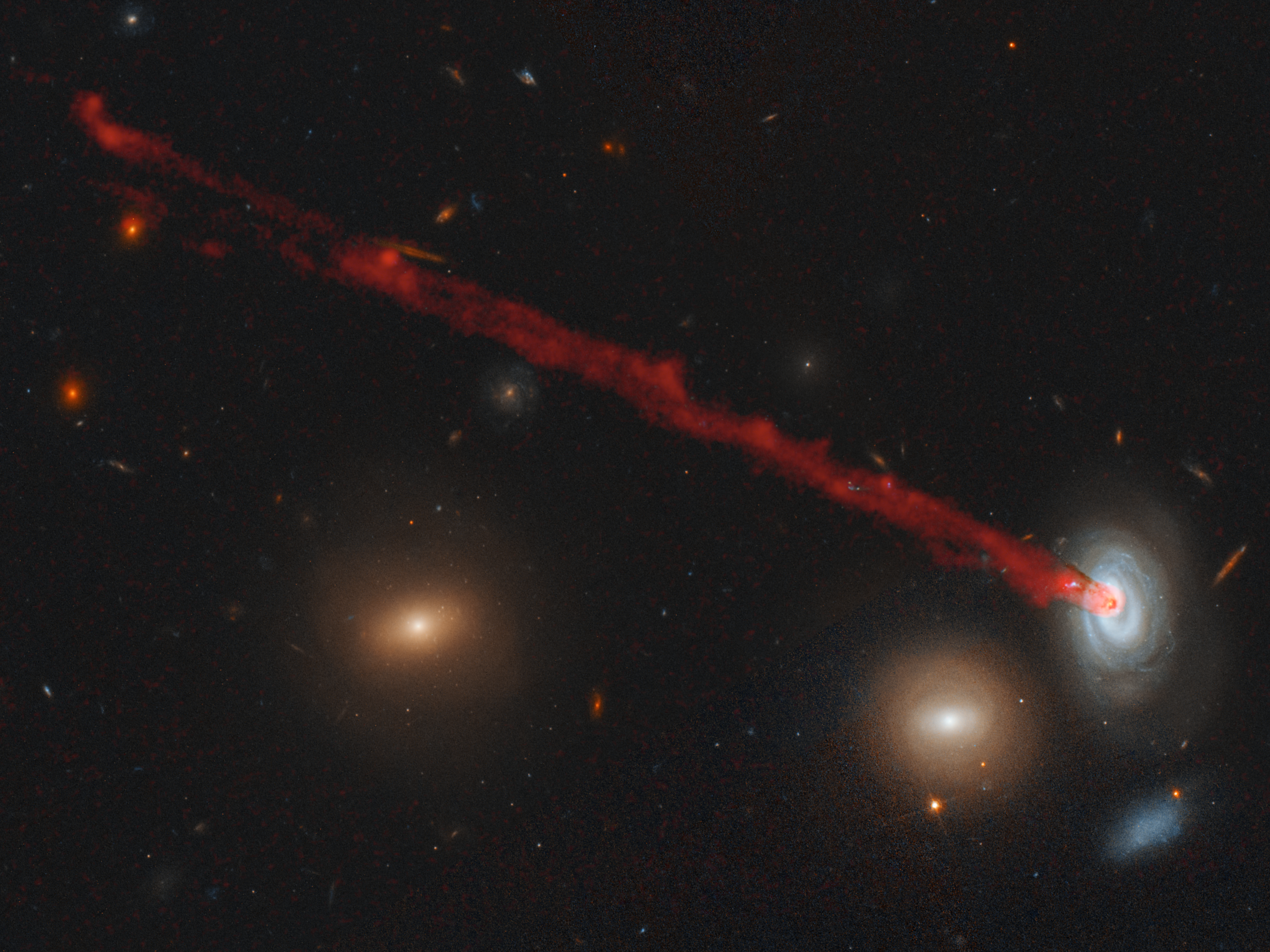
Click on the image to reveal H-alpha filaments.
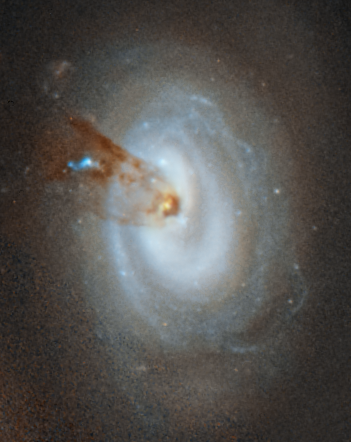
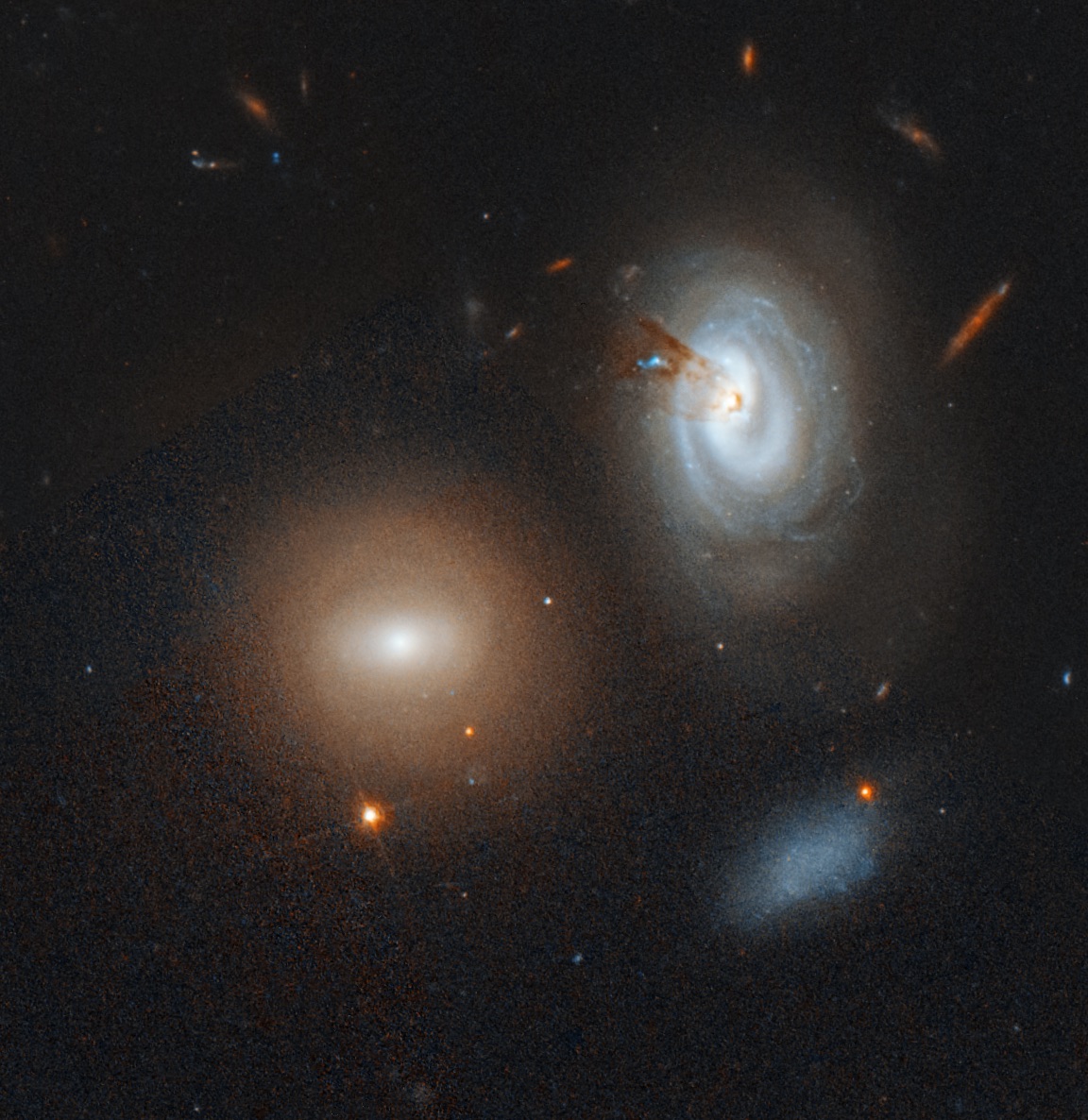
Click to enlarge image.
